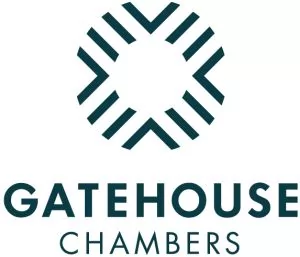This appeal concerned (inter alia) whether an application for an order for sale made under s.335A of the Insolvency Act 1986 ('IA 1986') should be made by an application notice issued under the Insolvency Rules 2016 ('IR 2016) or by a Part 8 Claim Form issued under the Civil Procedure Rules ('CPR').
Factual Background
The Appellants were the First Respondent's joint trustees in bankruptcy. They sought an order for the sale of the First Respondent's home ('the Property'). The first instance Judge dismissed the application on the basis that it should have been issued under Part 8 rather than by a notice under the IR 2016. It was held by the Judge that the failure to do so meant that he had no jurisdiction to make an order for sale or indeed an order for possession pending sale. He did, however, make a declaration that the property 'is' vested in the trustees, on the basis that this part of the relief was properly sought by the application notice and was accordingly within his jurisdiction.
The Appellants premised their appeal on two bases:
- The application was correctly brought by way of such notice under IR 2016; and
- Even if the application should have been brought by Part 8 Claim Form, the Judge still had jurisdiction. It was a remediable irregularity which had not prejudiced or otherwise caused injustice to the Respondents.
The unrepresented Respondents resisted the appeal on the basis that the Judge's conclusions were right and that it would be inhumane to evict them in the present circumstances. They further said that the First Respondent had long since been discharged from bankruptcy and so the creditors could not benefit from an order for sale.
The Issues
Broadly the Court considered that there were five main issues:
- Was the Judge right to hold that the application should have been brought by Part 8 proceedings?
- If he was right, did that mean that he lacked the jurisdiction to make the orders sought; or should he have held this to be a procedural defect capable of being cured?
- Did the First Respondent's discharge mean that an order for sale could not or should not be made?
- If the Judge did err, should the High Court remit the matter to the County Court or exercise that discretion itself?
- If the matter remained in the High Court, what order should be made?
1- How should an application under s.335A be brought?
The Court noted that s.335A was introduced to IA 1986 by way of s.25 and Schedule 3 of the Trustees of Land and Appointment of Trustees Act 1996 ('TOLATA 1996'). S.335A provides:
(1) Any application by a trustee of a bankrupt's estate under section 14 of the Trusts of Land and Appointment of Trustees Act 1996 (powers of court in relation to trusts of land) for an order under that section for the sale of land shall be made to the court having jurisdiction in relation to the bankruptcy.
(2) On such an application the court shall make such order as it thinks just and reasonable having regard to –
(a) The interests of the bankrupt's creditors,
(b) Where the application is made in respect of land which includes a dwelling house which is or has been the home of the bankrupt or the bankrupt's spouse or civil partner or former civil partner –
(i) The conduct of the spouse, civil partner, former spouse or former civil partner so far as contributing to the bankruptcy,
(ii) The needs and financial resources of the spouse, civil partner, former spouse or former civil partner, and
(iii) The needs of any children; and
(c) All the circumstances of the case other than the needs of the bankrupt.
(3) Where such an application is made after the end of the period of one year beginning with the first vesting under Chapter IV of this Part of the bankrupt's estate in a trustee, the court shall assume, unless the circumstances of the case are exceptional, that the interests of the bankrupt's creditors outweigh all other considerations.
(4) The powers conferred on the court by this section are exercisable on an application whether it is made before or after the commencement of this section.
S.14 TOLATA 1996 provides:
(1) Any person who is a trustee of land or has an interest in property subject to a trust of land may make an application to the court for an order under this section.
(2) On an application for an order under this section the court may make any such order –
(a) relating to the exercise by the trustees of any of their functions (including an order relieving them of any obligation to obtain the consent of, or to consult, any person in connection with the exercise of any of their functions), or
(b) declaring the nature or extent of a person's interest in property subject to the trust,
as the court thinks fit...
S.6 TOLATA 1996 furnishes trustees of land with the powers of an absolute owner, and allows trustees to obtain an order for possession and sale under s/14. However, TOLATA 1996 does not define the word 'application' and so, save as where the law provides to the contrary, such an application should be made under Part 8.
The key question for the Court was whether IA 1986 provides that an 'application' under s.335A is to be made under the IR 2016. The Court firmly concluded that the IA 1986 'plainly' provides that it should. The Judge held that Rule 1.35 of IR 2016 provides an explanation of how to bring an 'application' under Parts 7A to 11 of IA 1986, including under s.335A IA 1986. This position was buttressed by the following considerations:
- The wording of s.335A IA 1986 pointed towards such an interpretation;
- It makes good sense that the court's attention should be drawn at the point of issuing proceedings under s.335A that the application is made against a bankrupt, ensuring that all of the questions in relation to the bankruptcy can be found in one file;
- The reasoning of the lower court supported the proposition that applications under analogous provisions in s.336 and s.337 IA 1986 should not be made by way of application under IR 2016 but instead under the procedures appropriate for one under s.33 Family Law Act 1996. There was no authority to support such an approach nor was it clear why this should have been intended.
- Lastly both Warren J and Nugee LJ in recent decisions had taken it as read that an application under s.335A is to be made by way of an application under IR 2016. Such experienced judges would not have done so unless that proposition was correct.
Accordingly, the trustees' appeal against the lower court's order succeeded on that ground alone.
2 – What if the application was made in the wrong form?
The Judge held that even if the application should have been issued under the CPR, it would not have deprived the lower court of its jurisdiction to deal with the matter. CPR 3.10 provides a power to the Court to correct 'an error of procedure such as a failure to comply with a rule or practice direction'.
3 – The effect of the discharge from bankruptcy
Pursuant to s.281 IA 1986, the First Respondent's discharge from bankruptcy did not have any effect on s.335A IA 1986 for the purpose of carrying out the trustees' functions. The trustee can wait for more than a year a bankruptcy before bringing an application under s.335A to obtain the benefit of the provision.
4 – Should the matter be remitted to the County Court?
The Judge decided that it would be inappropriate to remit the matter to the County Court as the present Court had before it all of the relevant evidence.
5 – What order should be made?
The Court considered whether there were exceptional circumstances under s.335A such that the interests of the creditors would not be outweighed by other considerations. There were not; it was appropriate to make an order for sale. Following factual analysis it was decided that possession should not be delayed by more than three months.
Conclusions
This case serves as a useful statement of the need to issue s.335A applications under the IR 2016 rather than under Part 8 proceedings. Failure to do so will not necessarily be fatal, but the Court could not have been clearer in reaching its conclusions. Trustees would be well advised to bear this decision in mind when issuing applications for orders for sale.
The content of this article is intended to provide a general guide to the subject matter. Specialist advice should be sought about your specific circumstances.

